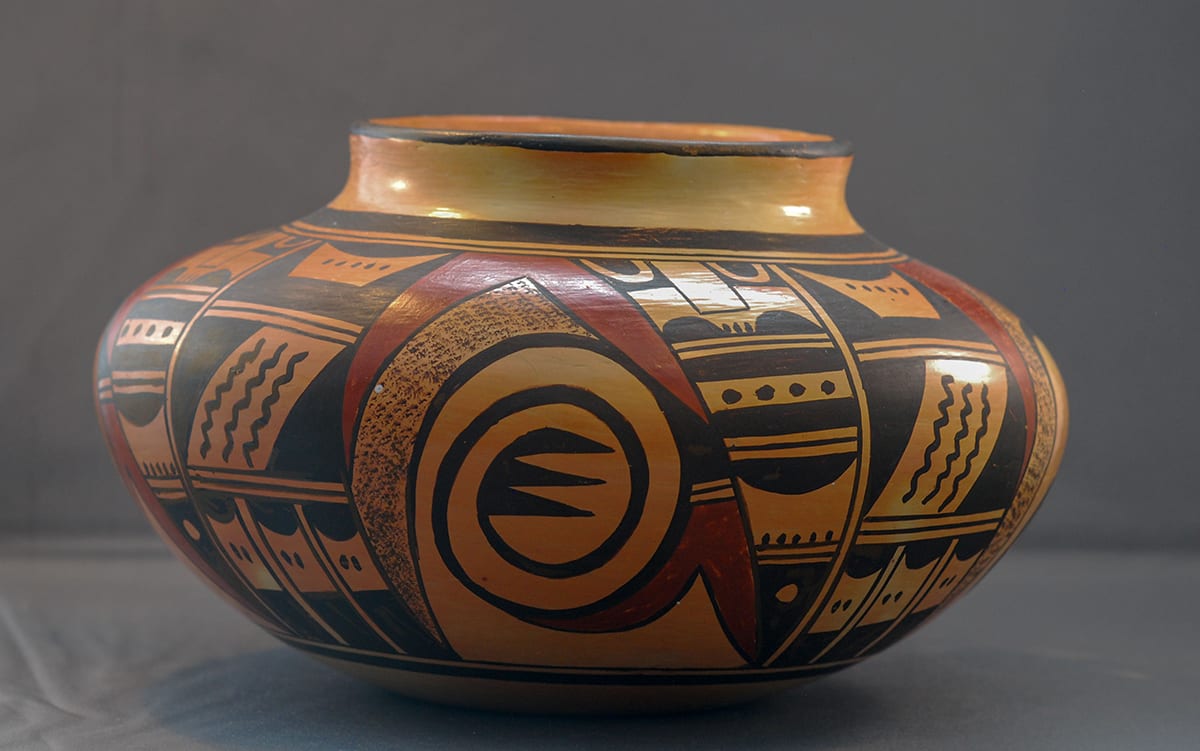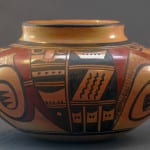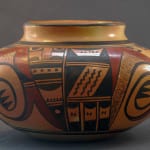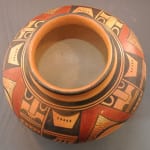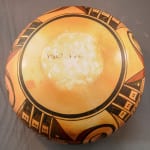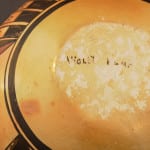I have not seen many pots by Violet Huma, though Schaaf (1998:54) reports she produced pots for more than 50 years (1930-1982+). She is the mother of Anita Polacca, from whom I purchased my first Hopi-Tewa pot (1960-01). Pot 2013-15 is a tribute to both Hopi pottery and to the maker’s skill.
Although somewhat heavy, the vessel is evenly formed, polished both inside and out, and has an enticing pattern of blushing from the firing. The lower half of the pot angles out from the base and then rises vertically before slanting inward to form a fairly narrow shoulder topped by a short neck. The resulting bulbous shape is substantial and all visible areas of the jar below the neck are painted.
The paint on this jar is dark and solid: Violet ground her hematite pestle thoroughly. As is frequently the case on Sikyatki Revival pots, the design is enclosed by thick-over-thin framing lines. About 10 different design motifs are presented in the design, arranged in a panel that is repeated four times. This mass of design could be confusing and overwhelming to the eye, but it is organized into a pleasing pattern by the use of both color and form.
The color is provided by an inverted “V” shape painted red with a shorter single-pointed end to the left and a longer double-pointed end to the right. The inner point of the right side forms a curve that is about parallel to the bottom of the jar. Rising from the lower framing line is a black swirl that fills most of the space inside the inverted “V” and ends with a motif of three triangles, which creates a reverse background effect. This swirl is nestled inside the horizontal extension of the red element. A stippled area fills the remaining space under the red design. The red form draws the viewer’s eye up. Much of the space enclosed by this black curvilinear element is unpainted, thus creating a bull’s eye that draws the viewer’s eye to this space. Together these designs provide tension and focus in the design. The unpainted surface enclosed by the black swirl provides a respite from those surfaces densely covered with design. The overall effect is complex and sophisticated.
Surrounding this central red shape in each of the four panels is a series of black designs that are typical on Hopi and Hopi-Tewa Revival pots. A blunt-nosed variation of Nampeyo’s “clown” face sits in the right corner of each panel. Split cloud images are drawn below. The left side of the panel contains two dissimilar geometric patterns with a three-lobed linear eagle tail below. Busy and centered, the design is a masterful presentation of a catalog of design motifs.

